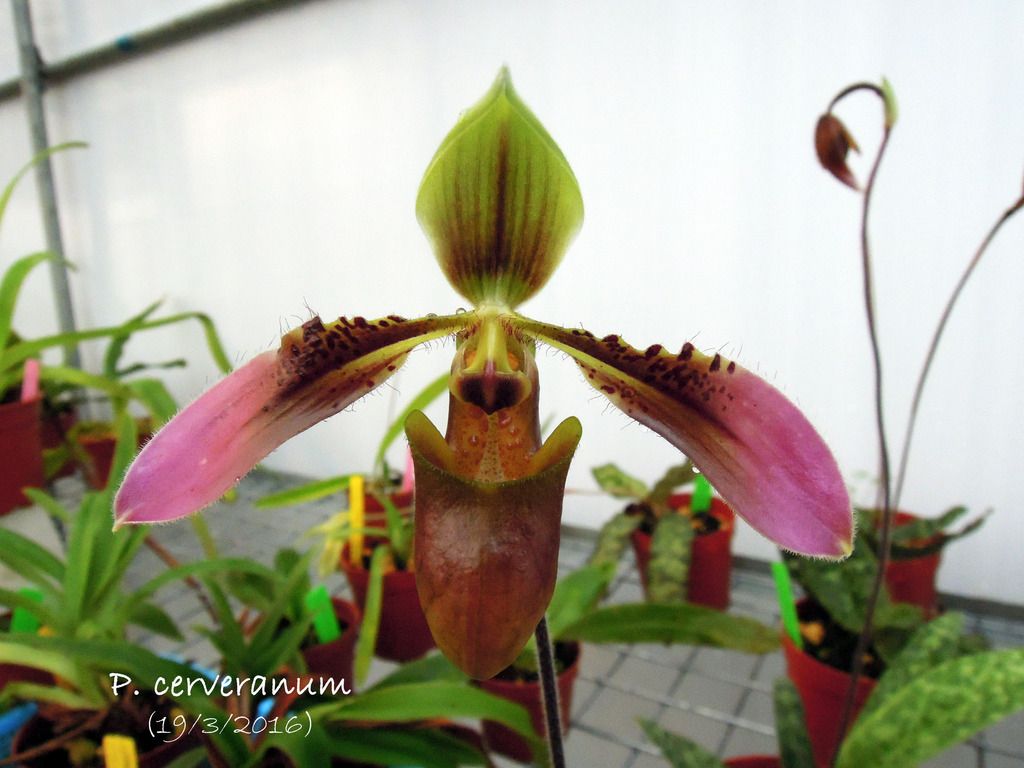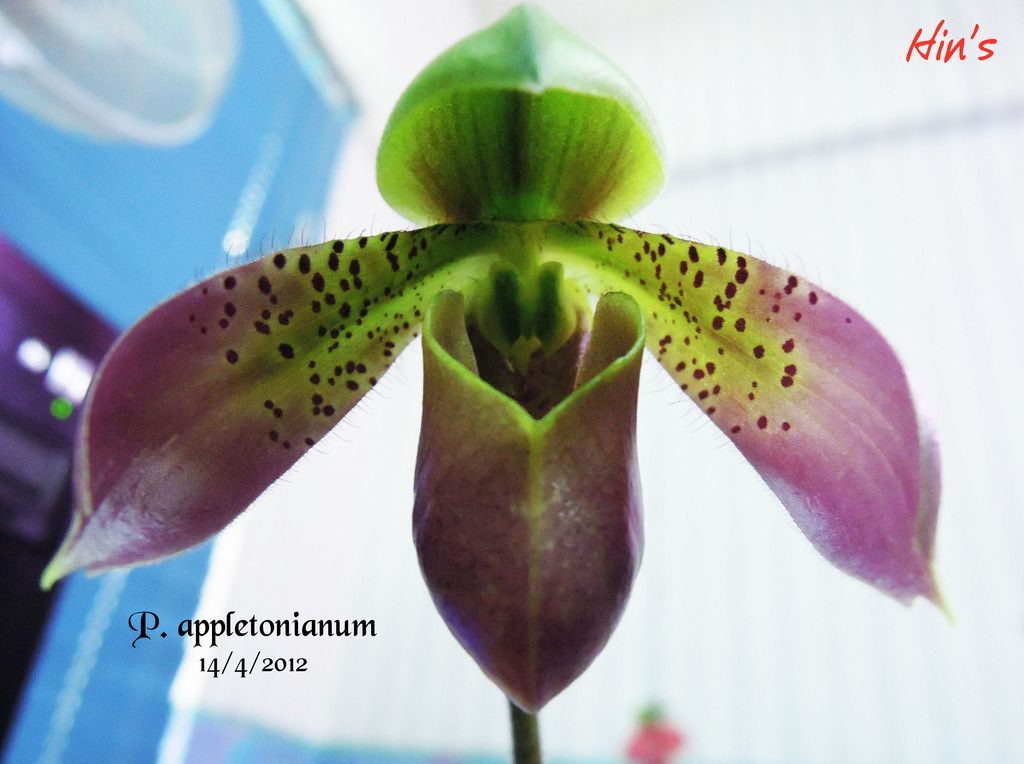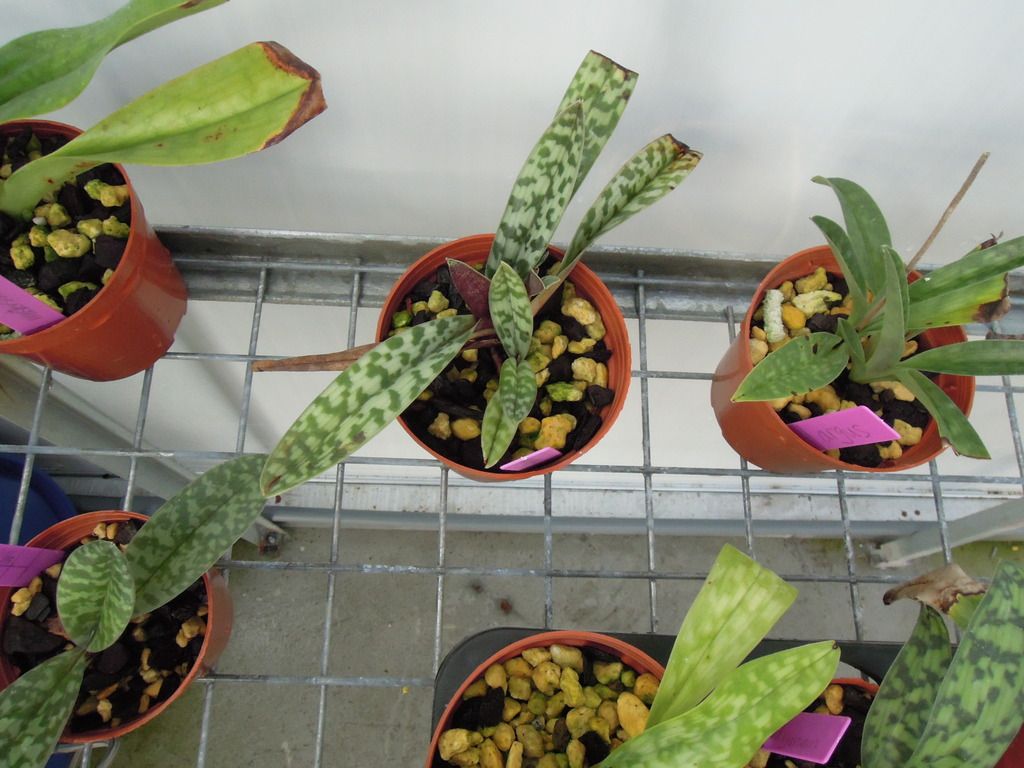You are using an out of date browser. It may not display this or other websites correctly.
You should upgrade or use an alternative browser.
You should upgrade or use an alternative browser.
Paph. cerveranum
- Thread starter Mocchaccino
- Start date

Help Support Slippertalk Orchid Forum:
This site may earn a commission from merchant affiliate
links, including eBay, Amazon, and others.
Happypaphy7
Paphlover
Interesting.
I couldn't tell the difference really.
BTW, that appletonianum has some bold spotting going on!
I almost thought it was a hybrid at a first glance.
I couldn't tell the difference really.
BTW, that appletonianum has some bold spotting going on!
I almost thought it was a hybrid at a first glance.
Mocchaccino
Biomedical Scientist
A pitty i did not take a shot for the fully open appletonianum. That photo was a little not appropriate since it was the moment it first open.
Literally not much difference except for the staminode shield. I could only tell cerveranum is more reddish brown while appletonianum is green. There should be a more botanical description about the shields. Got to refer to Braem's latest e-book.
Literally not much difference except for the staminode shield. I could only tell cerveranum is more reddish brown while appletonianum is green. There should be a more botanical description about the shields. Got to refer to Braem's latest e-book.
Happypaphy7
Paphlover
Ok, it's the color difference.
Is it consistant though??
At first, I thought if it was the shape difference.
Then, I could not see the shape of the first one because of the angle of the flower pointing slightly downward.
Do they have similar leaves too??
Is it consistant though??
At first, I thought if it was the shape difference.
Then, I could not see the shape of the first one because of the angle of the flower pointing slightly downward.
Do they have similar leaves too??
Mocchaccino
Biomedical Scientist
Ok, it's the color difference.
Is it consistant though??
At first, I thought if it was the shape difference.
Then, I could not see the shape of the first one because of the angle of the flower pointing slightly downward.
Do they have similar leaves too??
Let's judge! I cant tell really, probably appletonianum is a little greyish green while more normal greenish for cerveranum.
appletonianum
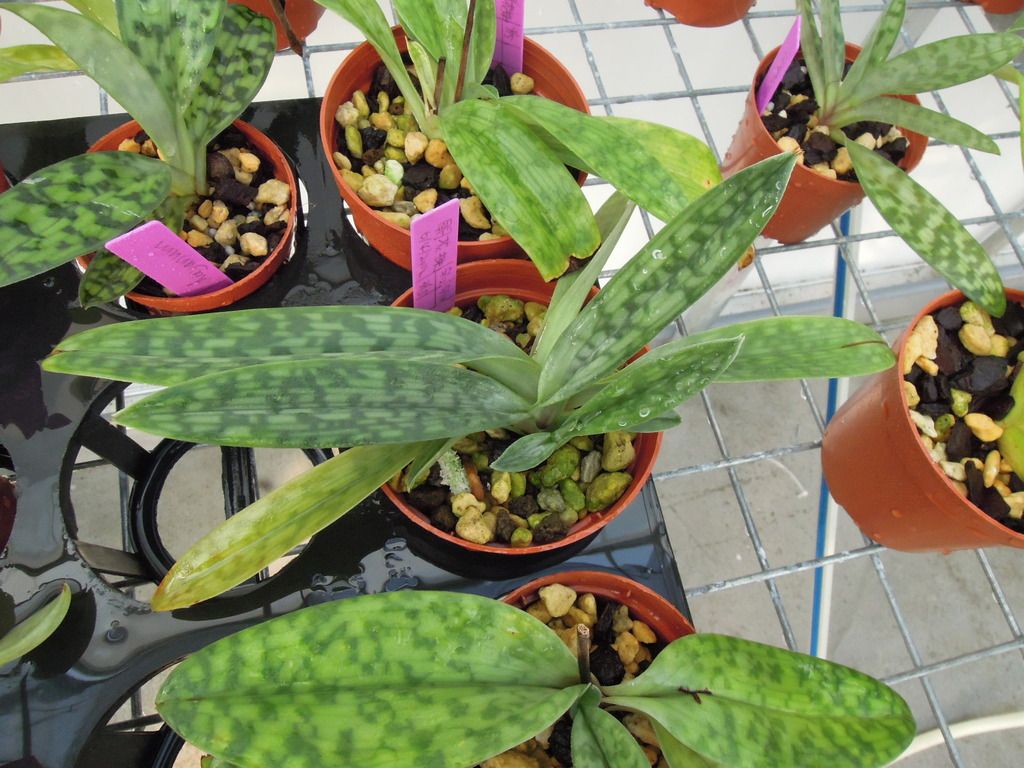
cerveranum
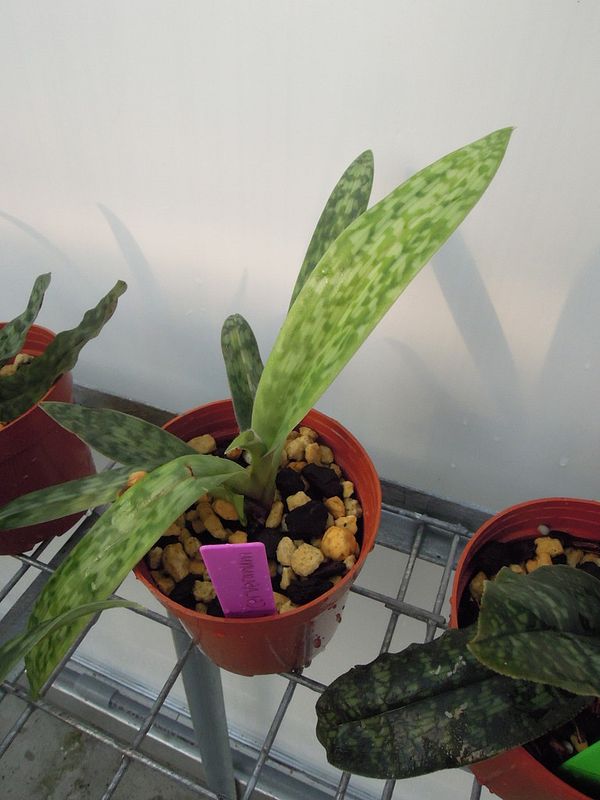
Happypaphy7
Paphlover
hmmm I would say basically the same?
The older growth on the cerveranum appears to have the same green tone as the appletonianum.
The older growth on the cerveranum appears to have the same green tone as the appletonianum.
troy
Well-Known Member
Beautiful display!!! Both are the best out of the sigmapetalums by a longshot!!
PaphMadMan
phytomanic
Both are gorgeous!
The staminodes are completely different guys.
May I ask where you purchased the cerveranum?
I agree, the staminodes are distinct. Also, the spotting in the cerveranum is quite warty compared to the appletonianum, especially along the upper margin of the petals where they contribute to a wavy edge the appletonianum does not have. The overall color and color distribution are also quite different. I haven't checked to see if these are characteristics that are used in the formal published descriptions, and I don't know if these plants are truly representative of the wild populations, but I find these 2 examples easy to tell apart.
Thanks for the comparison, especially including leaves. I could find room for these...
Even I immediately spotted the difference in the staminode. It's quite pronounced.
Mocchaccino
Biomedical Scientist
Both are gorgeous!
The staminodes are completely different guys.
May I ask where you purchased the cerveranum?
One of the Yunnan's vendors. They sold me a relatively and slightly higher price when compared to the appletonianums.
They were not blooming specimens when I purchased so I took the risk. Afterall they are honest vendors. I am curious though, how could they be able to distinguish cerveranum from appletonianums when the specimens are not in flower?
Mocchaccino
Biomedical Scientist
I agree, the staminodes are distinct. Also, the spotting in the cerveranum is quite warty compared to the appletonianum, especially along the upper margin of the petals where they contribute to a wavy edge the appletonianum does not have. The overall color and color distribution are also quite different. I haven't checked to see if these are characteristics that are used in the formal published descriptions, and I don't know if these plants are truly representative of the wild populations, but I find these 2 examples easy to tell apart.
Thanks for the comparison, especially including leaves. I could find room for these...
Both appletonianums and cerveranums can be quite variable. Except for the staminode shield, I could not really tell which is which. My appletonianum is in spike. It blasts off many times over the years. I hope this time it blooms out so I can take a better shot.
NYEric
Well-Known Member
Thanks for sharing. What about compared to hooker.?
Mocchaccino
Biomedical Scientist
Happypaphy7
Paphlover
One of the Yunnan's vendors. They sold me a relatively and slightly higher price when compared to the appletonianums.
They were not blooming specimens when I purchased so I took the risk. Afterall they are honest vendors. I am curious though, how could they be able to distinguish cerveranum from appletonianums when the specimens are not in flower?
Good points, especially considering variations among both groups, which makes it even more difficult.
Maybe they know there they grow and already saw them in bloom, and then return to collect at later time? I don't know.
Kawarthapine
Kawarthapine
Nice looking plants.
Thanks for highlighting the distinction...
... always more to lean and appreciate.
The more I think I know about these plants, the more I realize I don't.
Thanks for sharing.
Thanks for highlighting the distinction...
... always more to lean and appreciate.
The more I think I know about these plants, the more I realize I don't.
Thanks for sharing.
myxodex
Well-Known Member
Very nice to see these two together. I've had a few cerveranums and the leaf mottling is quite variable from pale green on darker green to light "crystalline" whitish mottling against green. The leaves are sometimes similar to hookerae in having a slightly rougher texture than those of either appletonianum or bullenianum.
The hairs or cilia on the rim of the pouch is also diagnostic of cerveranum and is absent in both appletonianum and bullenianum. Cribb described this ciliation on the pouch and the staminode for robinsonii (aka cerveranum) and suggested a possible hybrid with hookerae which shares these features. He was working with herbarium material at the time and was unaware of the wild populations. I have looked at close up pics of hookerae staminode and pouch rim next to that for cerveranum and the similarities are striking. Might it be that cerveranum is more closely related to hookerae than it is to either appletonianum or bullenianum ? Anyone know the chromosome count for cerveranum ?
The hairs or cilia on the rim of the pouch is also diagnostic of cerveranum and is absent in both appletonianum and bullenianum. Cribb described this ciliation on the pouch and the staminode for robinsonii (aka cerveranum) and suggested a possible hybrid with hookerae which shares these features. He was working with herbarium material at the time and was unaware of the wild populations. I have looked at close up pics of hookerae staminode and pouch rim next to that for cerveranum and the similarities are striking. Might it be that cerveranum is more closely related to hookerae than it is to either appletonianum or bullenianum ? Anyone know the chromosome count for cerveranum ?
Mocchaccino
Biomedical Scientist
Good points, especially considering variations among both groups, which makes it even more difficult.
Maybe they know there they grow and already saw them in bloom, and then return to collect at later time? I don't know.
That's a good possibility. Another possible scenario is that those are divisions of a cerveranum-confirmed mother plant.
Mocchaccino
Biomedical Scientist
Very nice to see these two together. I've had a few cerveranums and the leaf mottling is quite variable from pale green on darker green to light "crystalline" whitish mottling against green. The leaves are sometimes similar to hookerae in having a slightly rougher texture than those of either appletonianum or bullenianum.
The hairs or cilia on the rim of the pouch is also diagnostic of cerveranum and is absent in both appletonianum and bullenianum. Cribb described this ciliation on the pouch and the staminode for robinsonii (aka cerveranum) and suggested a possible hybrid with hookerae which shares these features. He was working with herbarium material at the time and was unaware of the wild populations. I have looked at close up pics of hookerae staminode and pouch rim next to that for cerveranum and the similarities are striking. Might it be that cerveranum is more closely related to hookerae than it is to either appletonianum or bullenianum ? Anyone know the chromosome count for cerveranum ?
You're brilliant! Not until you said it I didn't even recognize those tiny little cilia around the pouch. I haven't bloom one hookerae yet but i do heard the rumors about the correlation with hookerae. A pitty that there isn't sufficient published data about cerveranum. IMO there isnt a good consensus to date among all taxonomists concerning the status of cerveranum. I believe it depends on who you are following. Some might still consider it as part of appletonianums or at most a variety.
Similar threads
- Replies
- 8
- Views
- 567



